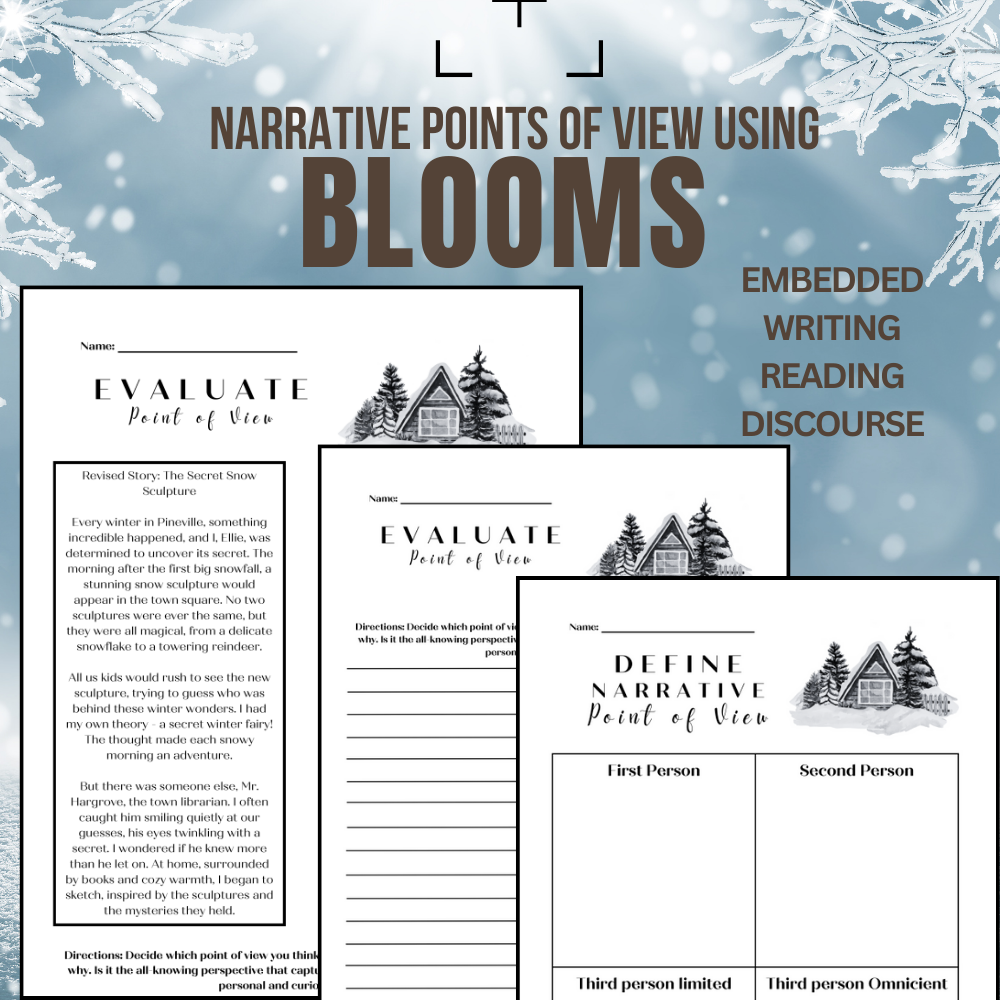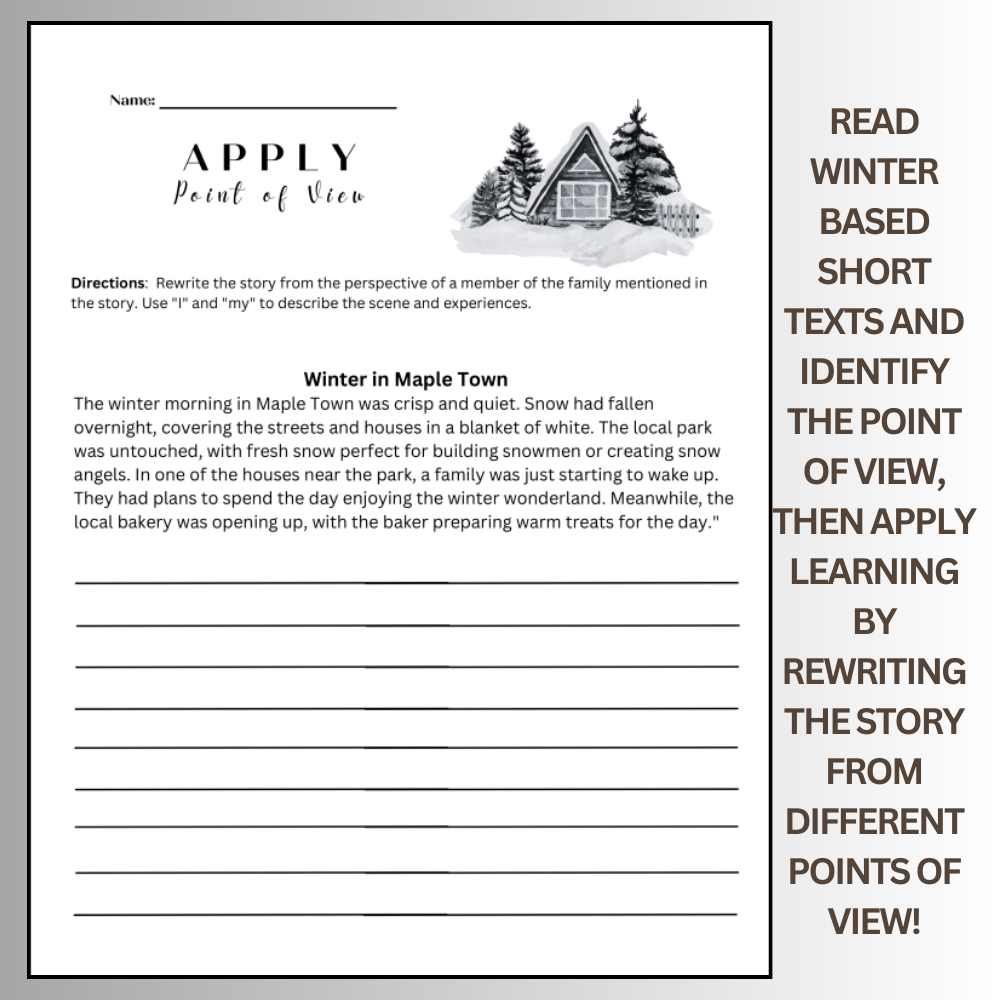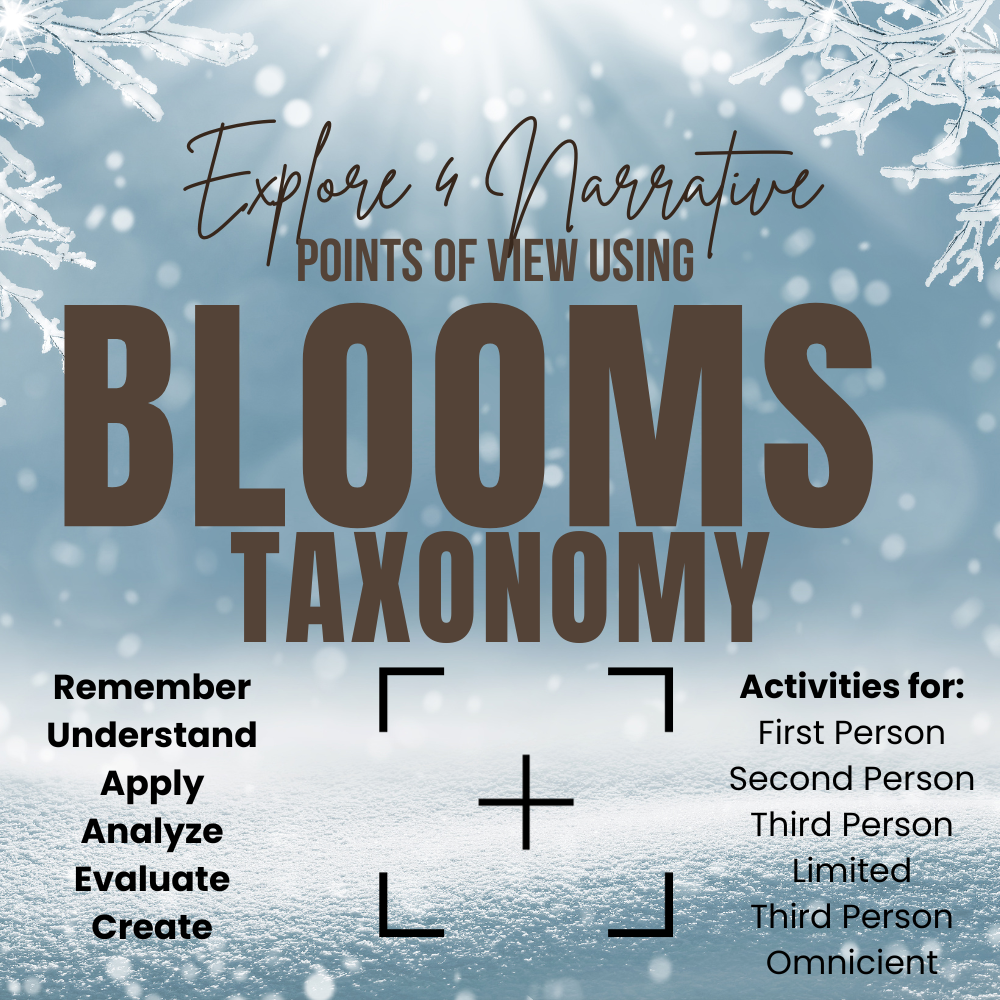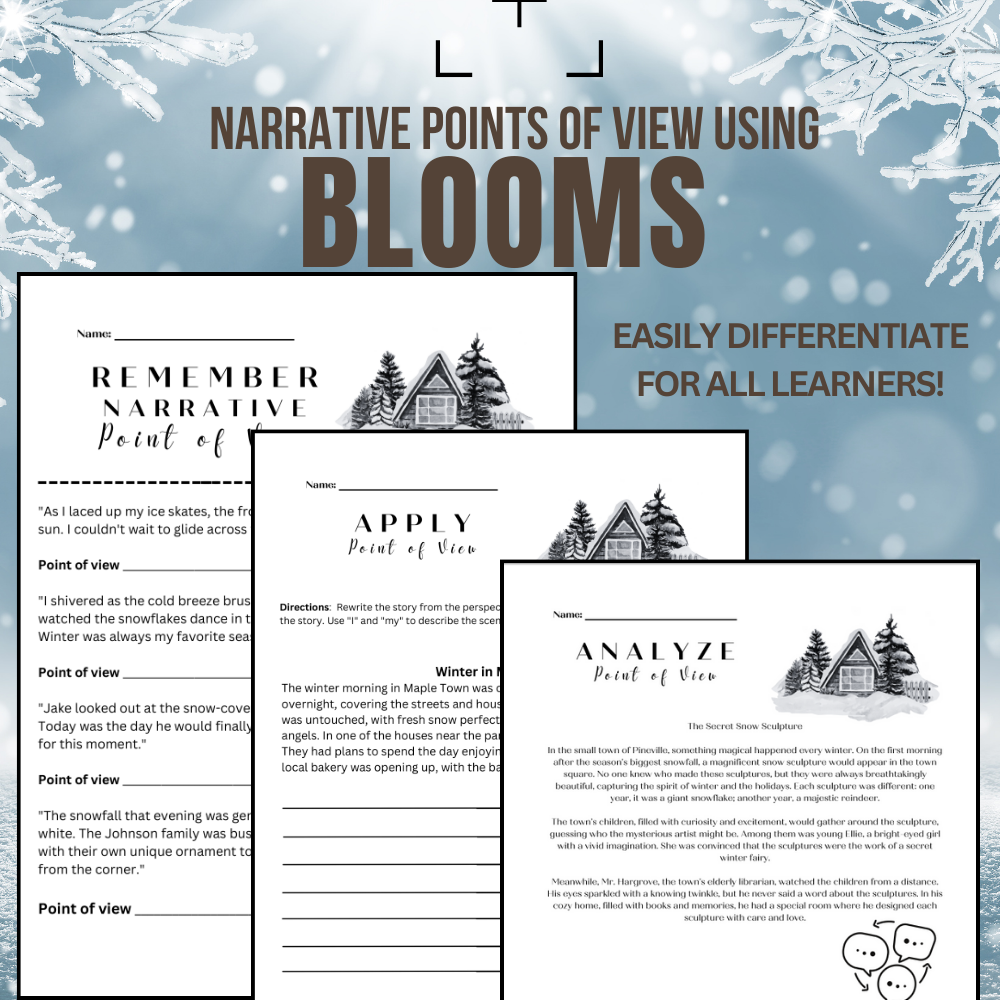Utilize Bloom’s Taxonomy Right Away With Narrative Point of View in the ELA Classroom!
Bloom’s Taxonomy is an easy way to differentiate in middle school classroom when creating tiered lessons for diverse learners.
At the heart of every middle school English Language Arts (ELA) classroom is a quest to deepen students’ understanding of literature. A pivotal aspect of this journey is mastering narrative perspectives. This year, you can transform how your students grasp this concept with a dynamic new ELA resource, tailored to dissect narrative points of view using Bloom’s Taxonomy as a tool for differentiation. If you haven’t read this article about differentiation check it out: 3 ways to leverage Differentiation in Middle School English Language Arts (toobookedup.com)
Bloom’s Taxonomy: A Scaffold for Learning
Bloom’s Taxonomy is an educational framework created by educational psychologist Dr. Benjamin Bloom in 1956. He led a group of cognitive psychologists at the University of Chicago who developed this classification system as a means to promote higher forms of thinking in education
Bloom’s Taxonomy is a hierarchical ordering of cognitive skills that can, among other uses, help teachers teach and students learn. that categorizes learning objectives into six hierarchical models: Remember, Understand, Apply, Analyze, Evaluate, and Create. It serves as a ladder of complexity, guiding students from basic knowledge retention to the pinnacle of critical thinking and innovation.
Here’s a brief outline of each tier in the hierarchy:
- Remember: This is the foundational level where students recall facts and basic concepts.
- Understand: At this level, students explain ideas or concepts and make sense of what they have learned.
- Apply: Students use the information in new situations.
- Analyze: Here, students draw connections among ideas, determining how parts relate or interrelate to one another.
- Evaluate: At this tier, students justify a stand or decision, making informed judgments.
- Create: The pinnacle of Bloom’s Taxonomy, where students produce new or original work.

Connecting Bloom’s in the Classroom Unwrapping Narrative Perspectives
Narrative point of view is the lens through which a story is told. Misconceptions often arise, such as the oversimplification of these perspectives or the misidentification of narrative voices. This resource meticulously dissects first, second, third person limited, and third person omniscient points of view, offering clarity and depth. By using Bloom’s as a framework, each hierarchy comes with an activity to move students through varying levels of rigor.
Differentiation: Key to Inclusive Learning
Differentiated instruction is vital in addressing the varied learning needs of students. This 15-page toolkit uses Bloom’s Taxonomy to differentiate activities, ensuring each student can engage at an appropriate level of challenge. From identifying narrative voices to evaluating their effectiveness and creating unique point-of-view narratives, every activity is an opportunity for growth.
Winter Themes: Seasonal Engagement
Leveraging the charm of the winter season, the toolkit presents exercises with a festive twist. This thematic approach not only makes learning relatable and fun but also keeps students engaged during the chilly months when the focus can wane, however feel free to use this resource all year long.
A Comprehensive ELA Enhancement
Designed with the middle school benchmark in mind, this resource is more than just a lesson plan; it’s a comprehensive tool that fosters critical and creative thinking, aligns with key ELA standards, and empowers educators to teach narrative point of view with confidence and creativity.
In conclusion, blending Bloom’s Taxonomy with narrative point of view education offers a robust approach to teaching ELA. It encourages educators to build lessons that are not only informative but also inclusive and engaging, paving the way for students to become more resilient, analytical, and creative thinkers.

Click here to purchase your resource: Blooms Taxonomy Aligned Analyzing Narrative Point of View Winter Themed Gr 6-8 (teacherspayteachers.com)

